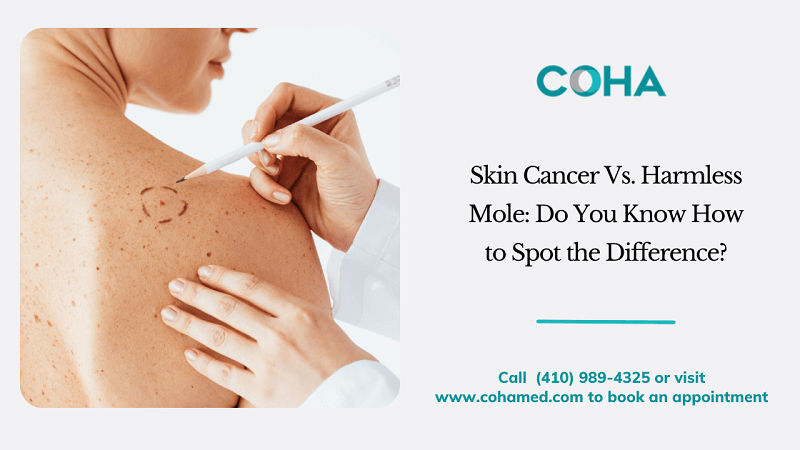Did you know you can stop skin cancer at an early stage by paying attention to the early warning signs? Self-examination is the first step to noticing unusual spots or moles on your body.
However, the question to ask is, are all moles cancerous? Not all skin moles are malignant, but people who have a lot of moles on their bodies are more prone to developing Melanoma. That’s why it becomes even more important to perform self-checks and get professional evaluations.
Types of Skin Cancers
- Basal Cell Carcinoma (BCC) - BCC is more likely to develop in areas of the skin that have been exposed to the sun. They often appear as a brown or black bumps with rolled edges; BCC can be cured if detected early.
- Squamous Cell Carcinoma (SCC) - Red, scaly, and thickened bumps on sun-exposed skin can be squamous cell carcinoma. Prone to bleeding or becoming an ulcer, it can grow into a huge mass if left untreated.
- Melanoma - Not as common as BCC and SCC, melanoma spots can be newly developed moles or existing spots that have changed their appearance or size. Melanoma accounts for the maximum number of deaths amid skin cancer casualties.
- Actinic Keratosis - These are small and scaly patches caused by sun exposure. Commonly grown on the head, neck, and hands, they can turn into squamous cell carcinoma if ignored.
- Actinic Cheilitis (Farmer's Lip)- It is a precancerous condition that affects the lower lip. The symptoms consist of scaly patches and rough lips. It can convert into squamous cell carcinoma if not treated in time.
- Cutaneous Horns - The funnel-shaped growth composed of keratin can become a nesting ground for squamous cell carcinoma if not treated timely. Fair-skinned adults are at risk of developing cutaneous horns.
Warning Signs of Skin Cancer
Some of the warning signs of skin cancer are:
- Change in appearance of mole or lesion
- Persistent pimples or sores
- Fingernail and toenails changes
- Impaired vision
- Scaly patches
- Persistent itching
- Post mole removal changes in skin
If you are witnessing any of these warning signs, it's best to get your skin looked at by a doctor.
Tips for Screening Moles for Cancer
One of the most effective methods to screen skin cancer moles is through the ABCDE test-
The ABCDE Rule
|
Asymmetric
|
A mole or birthmark is asymmetric and varies in appearance.
|
|
Border
|
Irregular, ragged, and blurred outline
|
|
Color
|
Brown, black, pink, or white color of the mole in some places.
|
|
Diameter
|
A large mole of ¼ inch diameter
|
|
Evolving
|
Changing the size, color, and diameter of the mole.
|
Treatment for Skin Cancer
Skin cancer can be treated if diagnosed at an early stage. The treatment course depends upon the type of skin cancer, its size, and its stage.The standard treatments for non-melanoma cancers are:
- Primary excision
- Mohs surgery
- Electrodessication and curettage
- Cryosurgery or freezing
- Topical chemotherapeutic creams
On the other hand, standard treatments for melanoma cancer are-
- Wide surgical excision
- Sentinel lymph node mapping
- Chemotherapy
- Radiation therapy
How Can Chesapeake Oncology-Hematology Associates Help in Skin Cancer?
At Chesapeake Oncology-Hematology Associates (COHA), we provide the best-in-class skin cancer treatment. Our skin cancer treatment plan includes chemotherapy, immunotherapy, and radiation therapy, among others. Contact us or schedule an appointment to get an early diagnosis of your skin condition today.



Share Your Valuable Thought